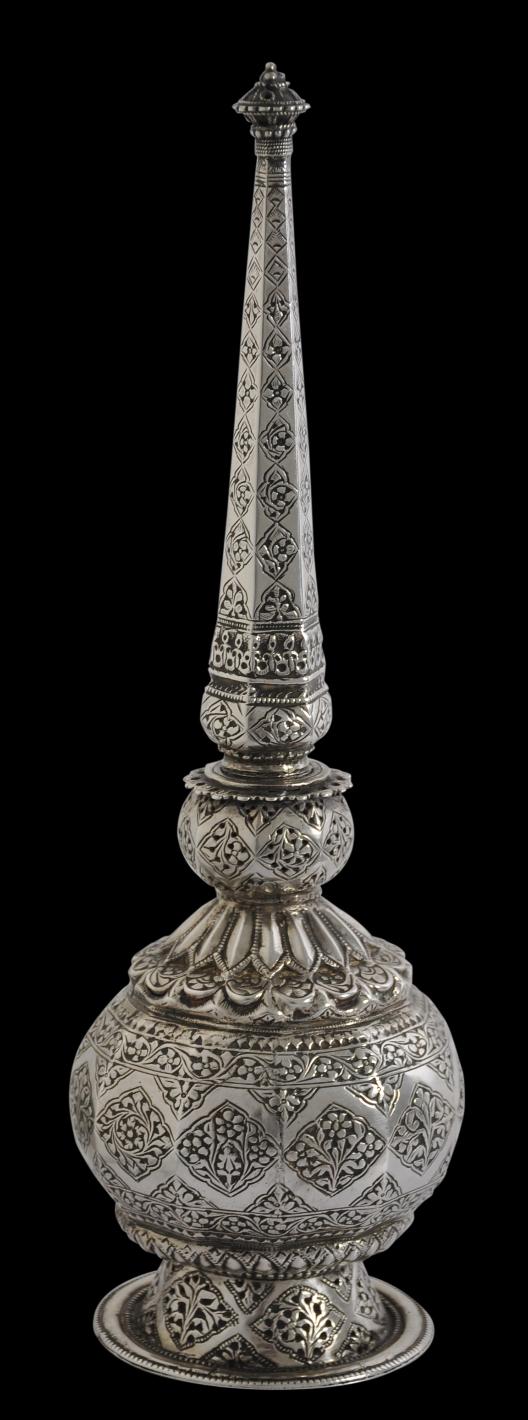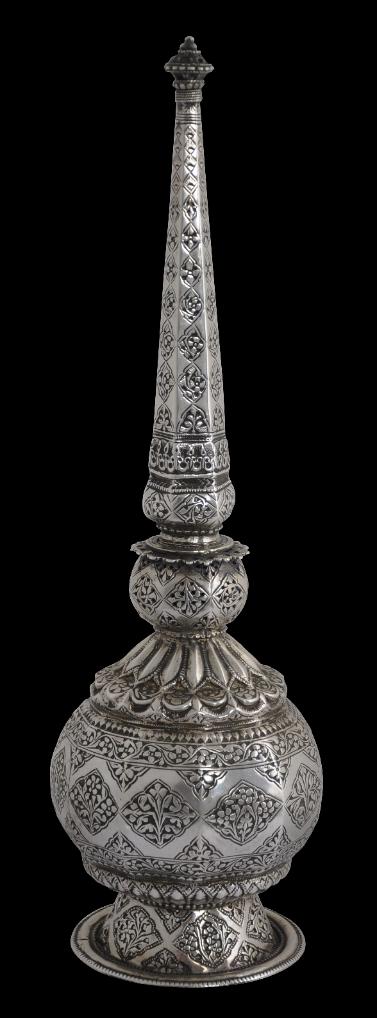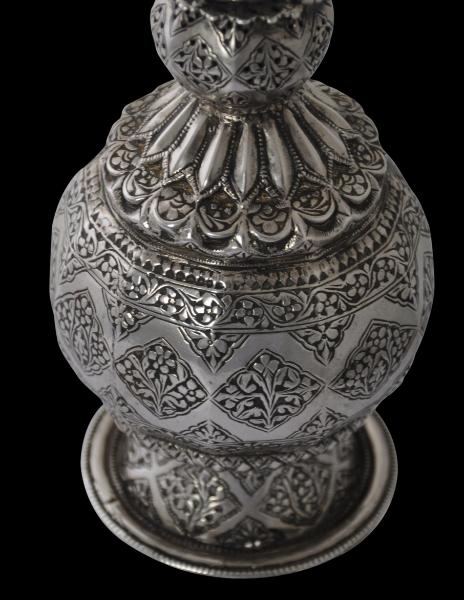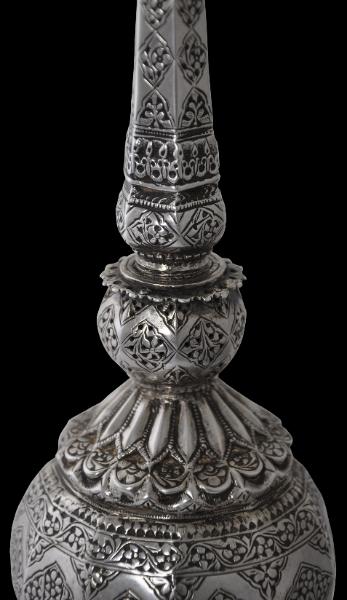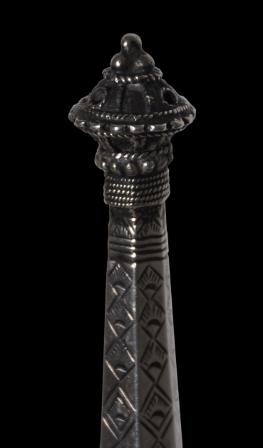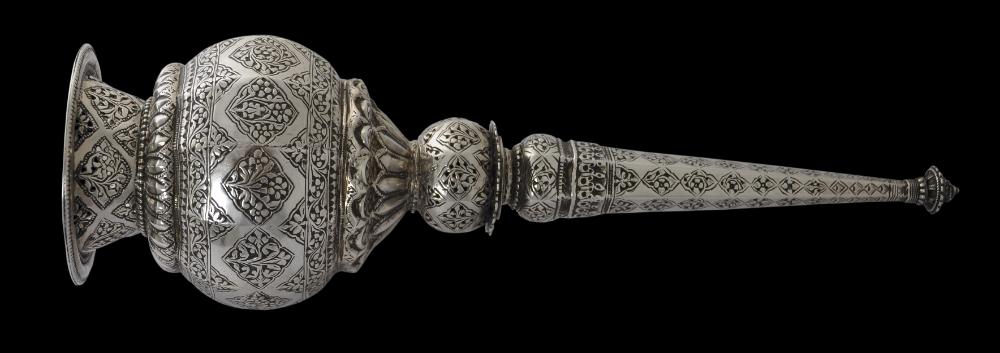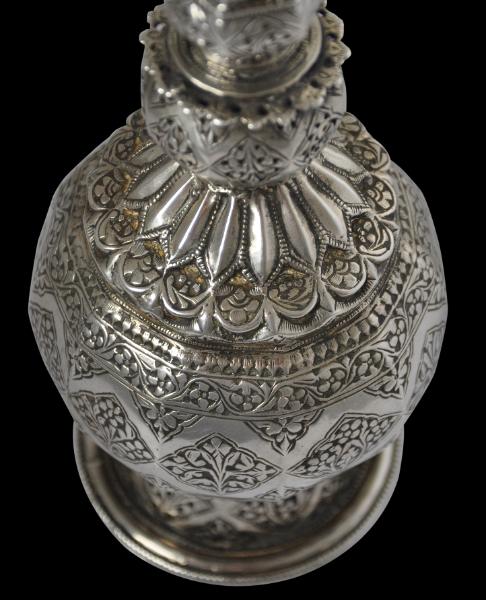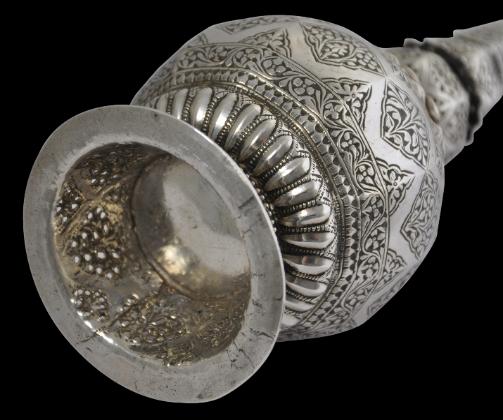Mughal Indian Silver Rosewater Sprinkler
Mughal Silver Rosewater Sprinkler
North India
first half 17th century
height: 31.5cm, weight: 392g
This sprinkler belongs to a rare, very small group of north Indian sprinklers that date to the seventeenth century, of which only a handful are known. Of high-grade (in excess of sterling) hammered sheet and cast silver, much of it is chased with cartouches filled with typically Mughal, Ottoman or Persian-inspired flower motifs.
It has an open-work foot and neck ring. The foot is flared. The water chamber is bulbous and has eleven slightly flattened sides. The long, thin neck is hexagonal and tapering.
The stem tapers to a fine nozzle that is embellished with fine twisted filigree, and which has three small holes to emit the rosewater. The stem twists into the body via a screw thread that runs anti-clockwise (the reverse of most screwing mechanisms today but what was typical of Indian screwing mechanisms of the eighteenth century and before.)
Zebrowski (1997) dates a similar sprinkler in the Victoria & Albert Museum to the second quarter of the seventeenth century. It bears the arms of William, second Earl of Desmond and third Earl of Denbigh, who lived from 1640 to 1685. According to Zebrowski, the first Earl of Denbigh had gone to India in 1631 and the sprinkler now in the V&A most probably was acquired by him.
A second similar sprinkler is in the Virginia Museum of Fine Arts. It is illustrated in Dye (2001, p. 401) and ascribed to the second quarter of the seventeenth century.
These two sprinklers are decorated with small animals amid flowers and vines although the sprinkler here is not decorated with animals. It does however have floral and foliate-filled cartouches similar to the V&A example. It also incorporates fine, pearled ribbing in keeping with the V&A example, and pierced or open-work in common with both other examples. The dimensions and form of the example here is in keeping with the other two.
The sprinkler is in a fine condition. It sits flatly and evenly. Its contours have been rounded and softened from years of use giving it an excellent ‘feel’ and patina. The sprinkler feels heavy for its size.
References
Dye, J.M., The Arts of India: Virginia Museum of Fine Arts, Philip Wilson Publishers, 2001.
Zebrowski, M., Gold, Silver & Bronze from Mughal India, Alexandria Press, 1997.
Provenance
UK art market.
Inventory no.: 2075
SOLD
